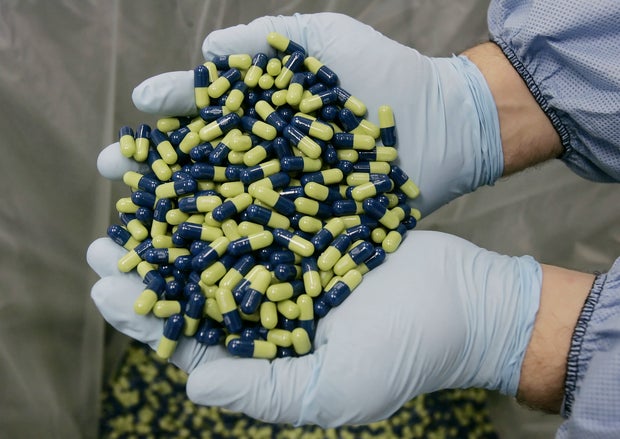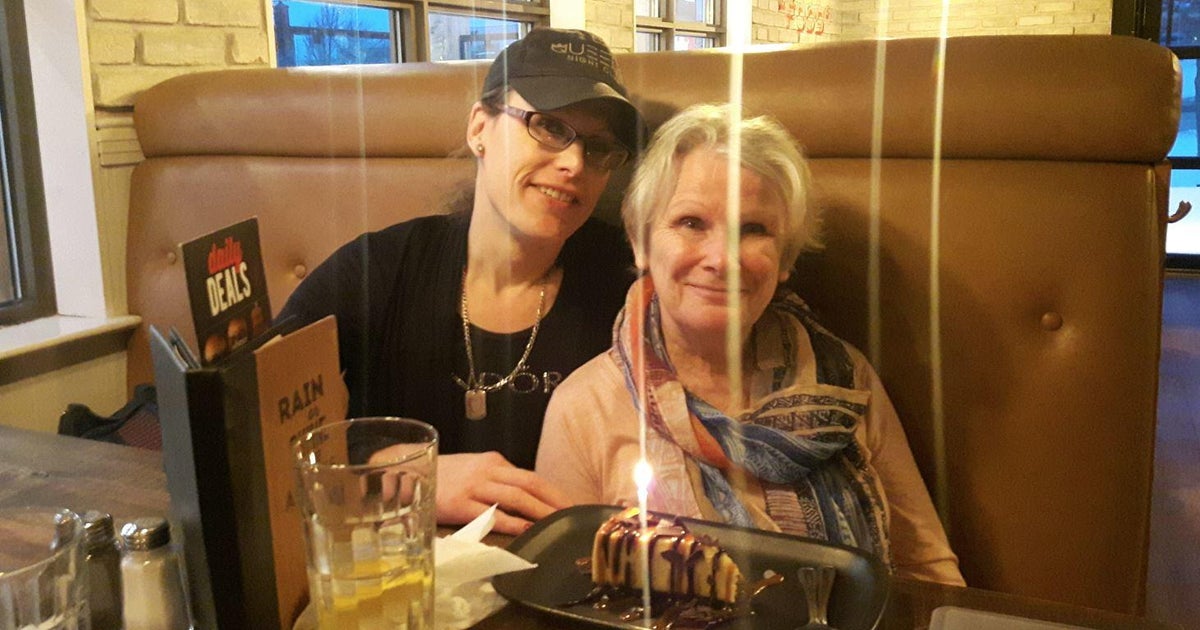CBS News
Patients on these antidepressants were more likely to gain weight, study says

New research is comparing the weight changes of patients taking different types of antidepressants, one of the most commonly prescribed medications in the United States.
The study, published on Tuesday in the Annals of Internal Medicine, analyzed the data of 183,118 patients across 8 U.S. health systems from 2010 to 2019. It found that some antidepressants were associated with more weight gain than others.
At six months, users of escitalopram (which is sold under the brand name Lexapro), paroxetine (Paxil) and duloxetine (Cymbalta) were 10% to 15% more likely to gain at least 5% of their baseline weight than sertraline (Zoloft) users.
Bupropion (Wellbutrin) users were 15% less likely to gain weight than sertraline (Zoloft) users, while fluoxetine (Prozac) use was not associated with a weight change.
The study’s authors describe these as “small differences,” but hope the findings will help patients and providers make more informed treatment decisions.
Darron Cummings/AP
“Patients and their clinicians often have several options when starting an antidepressant for the first time. This study provides important real-world evidence regarding the amount of weight gain that should be expected after starting some of the most common antidepressants,” lead author Joshua Petimar, Harvard Medical School assistant professor of population medicine at the Harvard Pilgrim Health Care Institute, said in a news release.
The study did have some limitations, including a lack of consistent information on medication dosage and adherence. It is also observational, meaning it shows correlation but not causation.
While the study shows certain drugs are correlated with weight gain, it doesn’t necessarily mean the drug is directly causing that weight gain.
For example, if someone lost their appetite due to depression and takes a medication that helps with their symptoms, weight gain could follow without the drug being directly responsible.
In this example, “it’s the treatment of the depression, and then subsequently, regain of appetite that’s causing a weight gain,” explains Dr. Aron Tendler, psychiatrist and chief medical officer at health technology company BrainsWay.
What the study revealed about the amount of people who stopped their medication is also important, Tendler said.
“In general, when someone’s prescribed a medicine, they really should be on it for a year,” he said. “The amount of people that were discontinuing the medicines at three and six and 12 months were incredibly high. Only like 4% of people stayed on their meds for 24 months.”
While the weight gain odds are “not terribly high,” Tendler said, the major takeaway for patients and clinicians is that there are multiple options if someone is concerned about weight gain.
“People can can switch to other medications,” he said, which could help in better adherence and treatment outcomes. “There are also nonmedication treatments like, for example, TMS (transcranial magnetic stimulation)… I think people should be taking that into consideration.”
Government data from 2017 showed antidepressant use rose 65% between 1999 and 2014. Recent studies have shown the impact of the COVID pandemic on increased antidepressant use among young people. For those aged 12 to 25, antidepressant use increased nearly 64% since the start of the COVID-19 pandemic, according to a study earlier this year.
CBS News
Here Comes the Sun: Jack Antonoff and more

Watch CBS News
Be the first to know
Get browser notifications for breaking news, live events, and exclusive reporting.
CBS News
Capturing Moriah Wilson’s Killer – CBS News

Watch CBS News
Be the first to know
Get browser notifications for breaking news, live events, and exclusive reporting.
CBS News
How to watch the Minnesota Vikings vs. Chicago Bears NFL game today: Livestream options, more

Getty Images
The Minnesota Vikings will take on the Chicago Bears today. The Vikings are currently 8-2, an impressive run so far this season, and will be looking to add a fourth win to their current streak after last Sunday’s 23-13 win against the Tennessee Titans. The Bears, on the other hand, are entering this game on the heels of a four-game losing streak after a tough 20-19 loss against the Green Bay Packers last Sunday.
Here’s how and when you can watch the Vikings vs. Bears game today, whether or not you have cable.
How and when to watch the Minnesota Vikings vs. Chicago Bears
The Vikings vs. Bears game will be played on Sunday, November 24, 2024 at 1:00 p.m. ET (11:00 a.m. PT). The game will air on Fox and stream on Fubo and the platforms featured below.
How and when to watch the Minnesota Vikings vs. Chicago Bears game without cable
You can watch this week’s NFL game on Fox via several streaming services. All you need is an internet connection and one of the top options outlined below.
Fubo offers you an easy, user-friendly way to watch NFL games on CBS, Fox, NBC, ABC, ESPN, and NFL Network, plus NCAA football channels. The Pro tier includes 200+ channels and unlimited DVR, while the Elite with Sports Plus tier adds NFL RedZone and 4K resolution. New subscribers get a seven-day free trial and all plans allow streaming on up to 10 screens simultaneously.
You can watch today’s game with a subscription to Sling’s Orange + Blue tier, which includes ESPN, ABC, NBC, and Fox. The plan offers 46 channels with local NFL games, nationally broadcast games and 50 hours of DVR storage. For complete NFL coverage, add Paramount+ to get CBS games, or upgrade with the Sports Extra add-on for additional sports channels like Golf Channel, NBA TV and NFL RedZone.
Watching NFL games, including Fox broadcasts, is simple with Hulu + Live TV, which includes 90 channels, unlimited DVR storage, and access to NFL preseason games, live regular season games and studio shows. The service includes ESPN+ and Disney+ in the subscription.
Want to watch today’s game live on your smartphone? If so, NFL+ streaming service is the solution you’re looking for. It lets you watch NFL Network and out-of-market games on mobile devices, with an upgrade option to NFL+ Premium that includes NFL RedZone for watching up to eight games simultaneously. Note that NFL+ only works on phones and tablets, not TVs.









